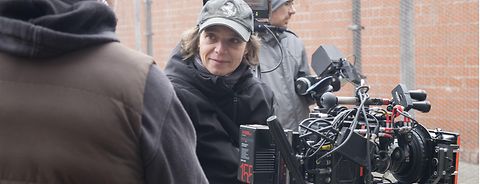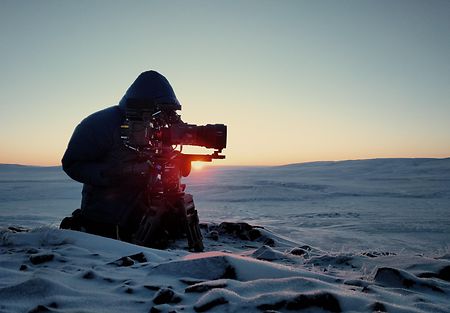Awarded at the European Film Awards 2021 for the photography of “Great Freedom” by Sebastian Meise, director of photography Crystel Fournier, AFC, talks to ARRI about her camera and lighting work on this Austrian feature film.
How did you react to your Best Cinematographer award for “Great Freedom” at the European Film Awards (EFA)?
It was a very nice surprise. Unfortunately, I couldn’t go to the ceremony. I was shooting in Italy on “Chiara” by Susanna Nicchiarelli. I'm glad “Great Freedom” was recognized; it’s a film I'm very attached to. I feel like I was able to push my visual ideas, to take them to the end. And it was a very good collaboration with Sebastian Meise. There are very few directors who agree to push the limits on darkness. I also enjoyed lighting this film.
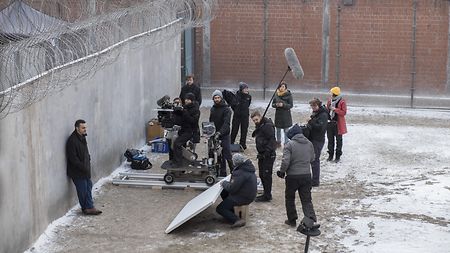
The director of photography, Crystel Fournier AFC and the film crew of “Great Freedom” in Vienna
“Great Freedom” takes place almost entirely in a prison between 1945 and 1969, where Hans is serving successive sentences under Section 175, which punished homosexuality in Germany at that time. How did you approach this project?
The rare outdoor scenes are shot in Vienna, Austria, and the rest in a deserted early 20th century prison in Magdeburg, Germany. Except for the solitary confinement cell which is located in Berlin. It’s sad to say, but from a cinematic point of view, the prison is a very beautiful place to film. At the beginning, Sebastian had as a reference: “A Prophet” by Jacques Audiard which is almost entirely shot handheld. After some discussion, we abandoned this idea as it did not really correspond to the spirit of the film, which is more composed. As we follow the main character over three periods of imprisonment, we had to define or encapsulate each of the eras. The immediate post-war period is filmed on foot and on tracking shots. The end of the fifties, when Hans is imprisoned with his love Oskar, is more dynamic, with scenes in the courtyard and a lot of movement. There, we often shot with a Steadicam. In the cells, I used a slider so that I could reorient myself a little.
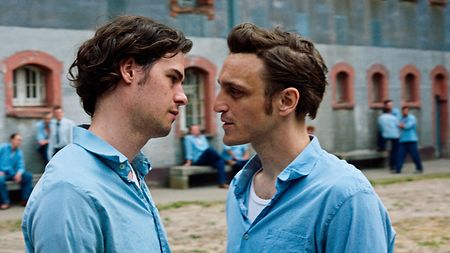
Franz Rogowski (Hans) and Thomas Prenn (Oskar)
You also defined the eras in terms of light?
Yes, it was important, so that the viewer could recognize the different eras that are intertwined in the film. The first time I visited the prison, especially the large central hall with its glass roof and side windows, it became obvious to me that the light had to be visible in the field. The place is so vast that I had to find solutions to make the set exist beyond the light reinforcements that I could have through the windows. So I worked closely with the set design and played with the different colorimetry of the lamps in the field. In the first part, after the Second World War, we used a mixture of tungsten and daylight, thanks to large, suspended lights in the frame. In the late fifties, I relied on fluorescent tubes with a yellow-green cast. In the 60’s, they were replaced by cooler neon.
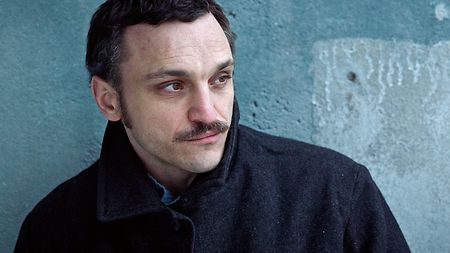
“Whatever the period, I assumed that the light was coming from above, with something quite harsh marking the faces,” says Crystel Fournier AFC
What camera system did you use?
Originally, I wanted to work with the ALEXA XT. I really like this camera and I use it a lot. But since there were a lot of Steadicam shots, I finally opted for the ALEXA Mini. I’ve been shooting exclusively with ALEXA for years. Depending on the film, I alternate between the Mini, the LF, and the XT. They are very reliable cameras. I also like their ergonomics and their rendering in underexposure. I can go very far into the extremes and I know that they will remain very regular in terms of colorimetry. There will be no flatness or noise build-up in the blacks. It was very important on this film where I had to play with a lot with shadows and where I used quite hard lights. As for the lenses, Sebastian initially wanted to shoot with vintage lenses. But after extensive comparative tests, I finally opted for Leica Summilux because the series is very complete. As we were shooting a lot in small spaces, I wanted to have all the intermediate lenses available.
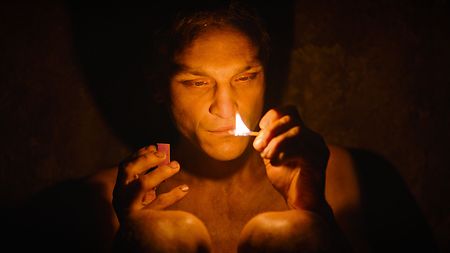
“When Hans is sent naked to the dungeon, the director wanted the character to be entirely in the dark and the only light to be that of the trapdoor opened by the guards.” - Crystel Fournier AFC
You have worked with ARRI Rental for this film. How was the collaboration?
It went very well. “Great Freedom” is an Austrian and German co-production. ARRI Rental Munich provided us with the light while ARRI Rental Vienna rented us the cameras: the ALEXA Mini and the ARRI SR3 for the two Super16 sequences. Concerning the lenses, I could make a comparison between the Lomo, the ZEISS wide aperture, and the Leica Summilux with the Mini. ARRI Rental Vienna was the only rental company that had all three series. We were very grateful to have the comparison and we were also able to test the make-up with the Summilux.
The treatment of the lights in the cells must not have been easy. How did you work?
Whatever the period, I assumed that the light was coming from above, with something quite harsh marking the faces. This is the kind of light you usually try to avoid in cinema. During the day, I had SkyPanel light coming in through the window of the cell that Hans and Viktor shared. Inside, I installed a long Kinoflo frame on the ceiling and folded the edges to avoid lighting the walls and to concentrate the light on the bodies. Inside, I had put an Astera on battery to get rid of the cables as much as possible. This allowed the characters to be free to move around in this 7 square meter cell. When Hans is sent naked to the dungeon, the director wanted the character to be entirely in the dark and the only light to be that of the trapdoor opened by the guards, with a marked dazzling effect when it opens. During the shooting, I had left a little light so that the body could be seen, but Sebastian did not hesitate to opt for total darkness during color grading.
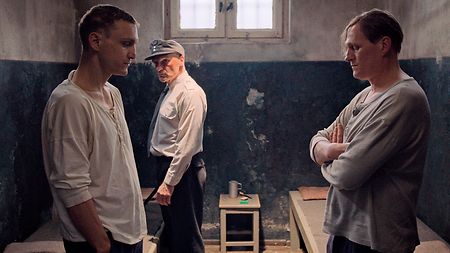
“During the day, I had SkyPanel light coming in through the window of the cell that Hans and Viktor shared,” explains the DP
What was the most complex scene in “Great Freedom” for you?
I think it must be the night sequence in the punishment yard where Hans is sent to find his lover Leo. They are in a dark corner, so to be out of sight of the other prisoners, but we still had to see what was going on between them. I had to find a balance between the two. In this scene, I used mercury lamps, taken over by a SkyPanel 30, to give the idea of darkness in the wide shots. As you get closer to the two characters, the tight shots are a little brighter.
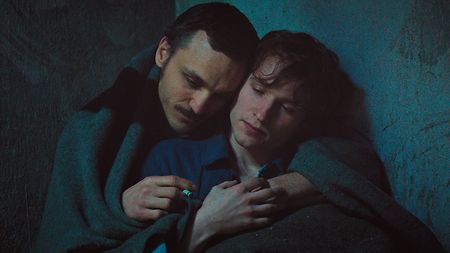
Franz Rogowski (Hans) and Anton von Lucke (Leo) during the night sequence of the punishment yard
What are some future projects you are working on?
I just finished shooting “Chiara” by Susanna Nicchiarelli in Italy, which is a period film set in the Middle Ages. It follows the struggle of St. Clare, who co-founded the Franciscan order with St. Francis of Assisi. I shot with an ALEXA XT as my main camera and I had an ALEXA Mini for the Steadicam. This is the third feature film I've worked on with this director, who evolves into very different worlds from one film to the next. Each time, we have to find the visual identity of the film. It is very interesting.
You have worked on feature films in France for a long time, especially on the first three films of Céline Sciamma. Is it a choice to shoot only abroad today?
No, it just came about. I wanted to work abroad while alternating with French films. But I had more and more offers in Europe, and since 2017, I find myself working mostly abroad. But not all of these films have been released in France, so maybe that's why I get fewer offers here. However, I intend to return to shoot in France. I miss it.
